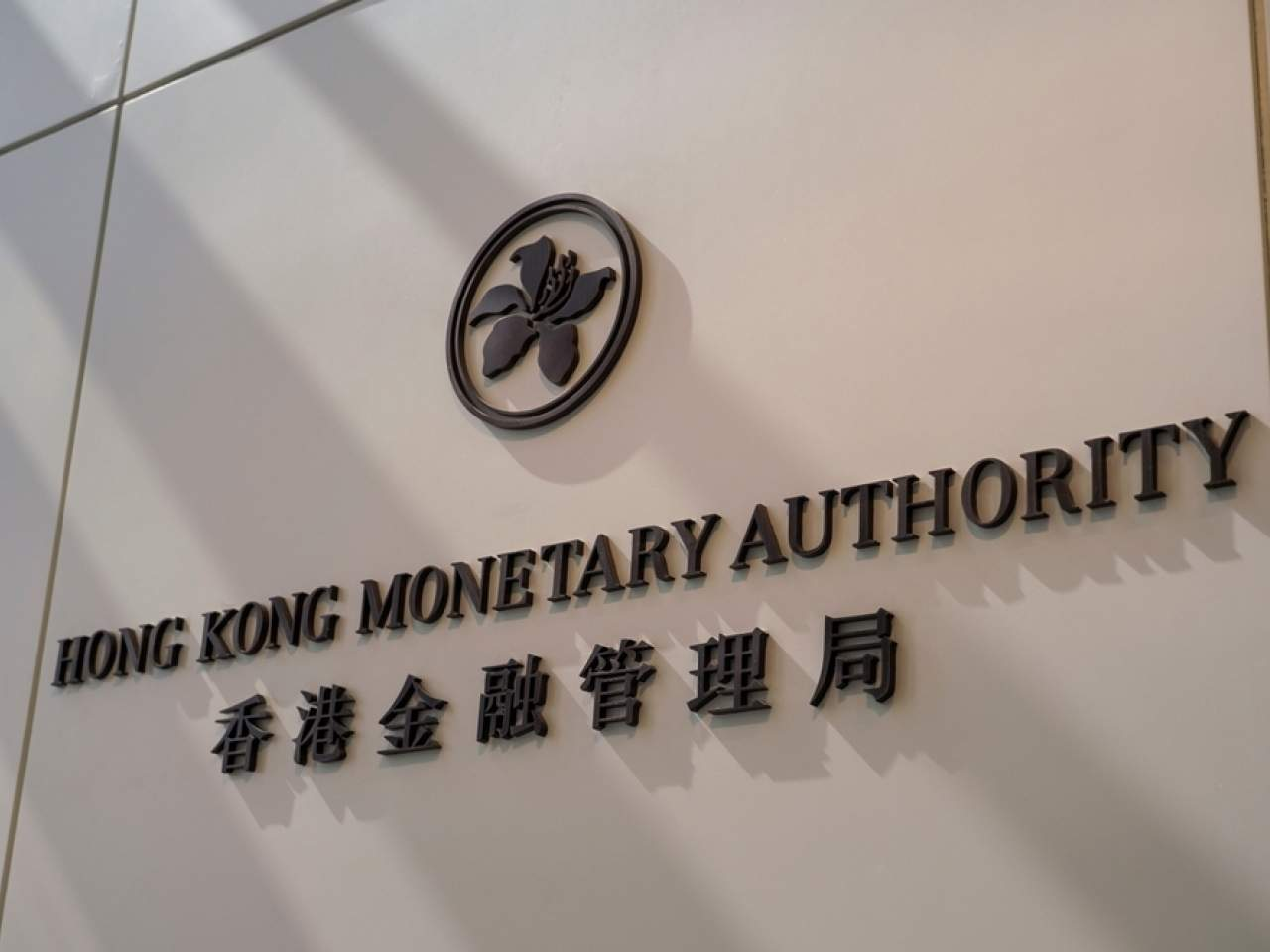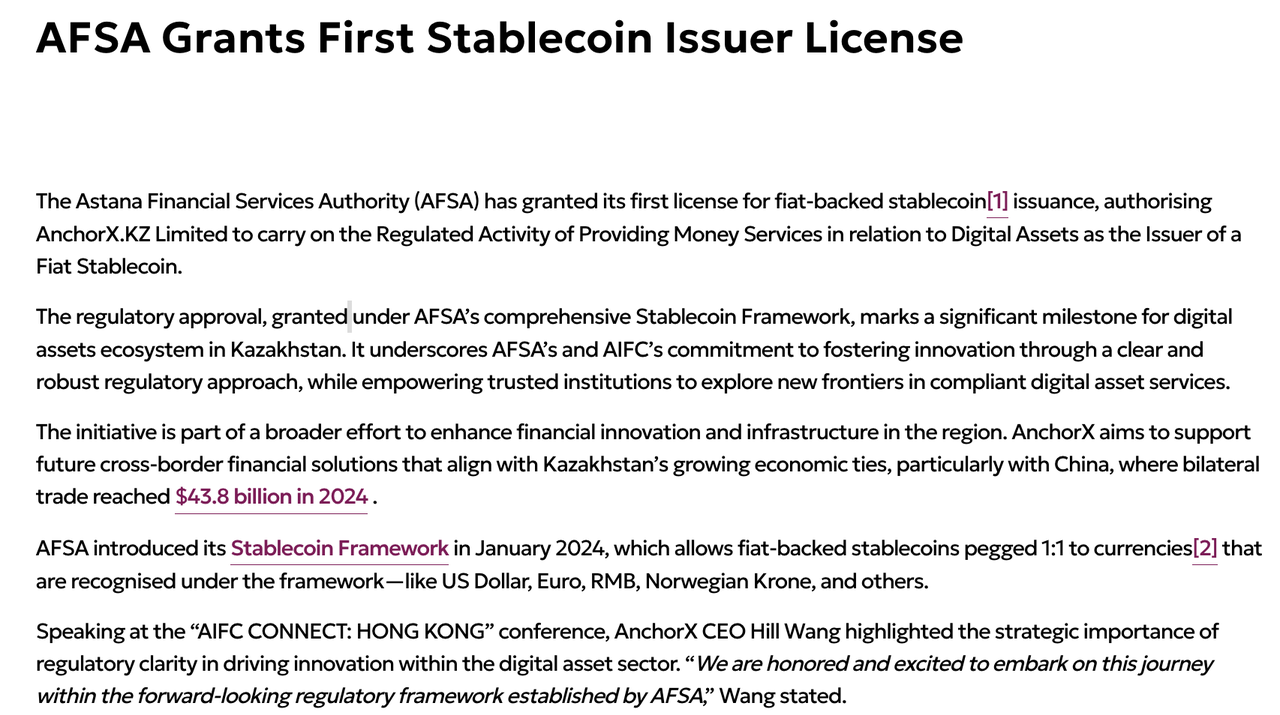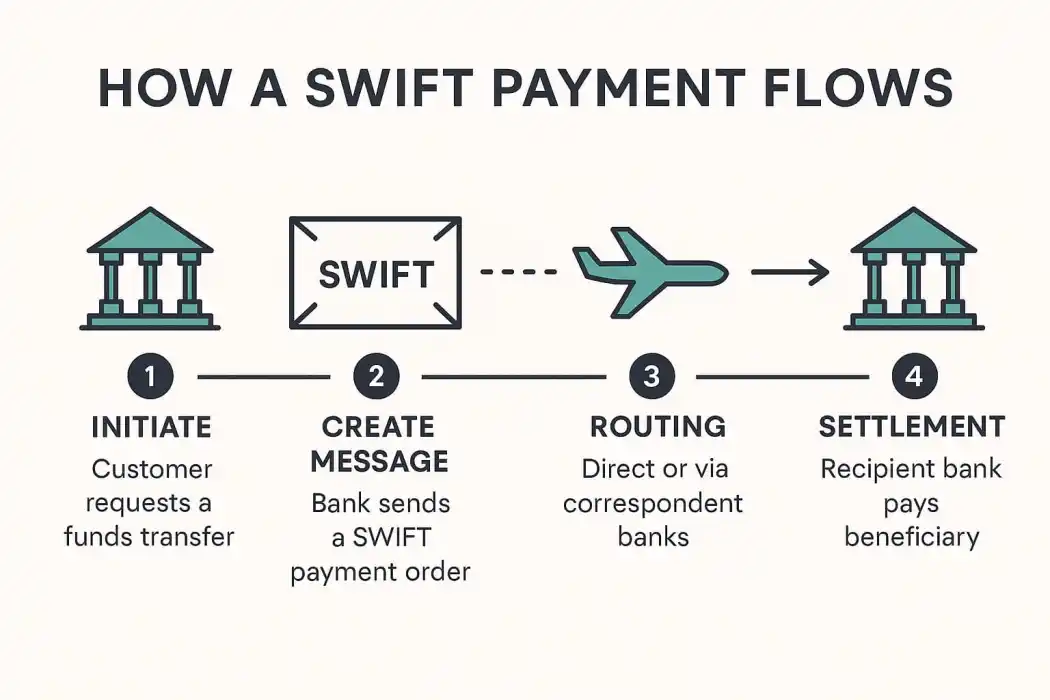Interview with AnchorX Founder Hill Wang: The Trillion-Dollar Ambition of Offshore RMB Stablecoin
Original author: Lesley, MetaEra
The global monetary system stands at a historical turning point. A new payment revolution centered around sovereignty, compliance, and efficiency is quietly unfolding.
On July 19, at the 'Shanghai-Hong Kong Web3 Complementary Collaboration Development Conference' in Shanghai, Hill Wang, the founder of AnchorX, detailed the practice and development trends of offshore RMB stablecoins. With the rising demand for cross-border payments and the gradual clarification of regulatory frameworks in various countries, offshore RMB stablecoins are entering a crucial development window.
From Hong Kong to Kazakhstan, from the five Central Asian countries to the 'Belt and Road' regions, AnchorX is paving a new digital Silk Road. This is not only a business innovation but also a strategic bet on the diversification of the global monetary system.

"My first encounter with cryptocurrencies was during my time as a VC at Hony Capital, where I frequently researched cutting-edge technology projects, which gave me some understanding of the crypto industry," recalled Hill Wang, founder of AnchorX, in an exclusive interview. Previously, he served as a senior analyst at Morgan Stanley and as a managing partner at Hony Capital, with nearly two decades of experience in finance and investment.
"By the end of 2022 and the beginning of 2023, we concluded that exchanges are the most profitable track in the current crypto industry, and the next opportunity is likely to be stablecoins." As 'infrastructure' connecting traditional finance with the crypto world, stablecoins can improve cross-border payment efficiency and reduce settlement costs. However, before full implementation, 'compliance' will determine how far stablecoins can go.
It is against this backdrop that Hong Kong's policy movements have become a key factor. As an international financial center, Hong Kong boasts a regulatory environment highly recognized by the industry while retaining more operational space for financial innovation. "Hong Kong's support in this regard is crucial. We've seen Hong Kong initiate public consultations on stablecoins early on, positioning itself at the forefront globally," said Hill Wang.

Hong Kong Monetary Authority
At the end of 2023, the Hong Kong Financial Services and the Treasury Bureau and the Hong Kong Monetary Authority (HKMA) jointly issued a consultation paper on stablecoin regulation, soliciting opinions on issuance mechanisms, reserve management, and licensing requirements, laying the groundwork for the next steps in policy advancement. Seizing this opportunity, Hill Wang established AnchorX in Hong Kong in 2023 to enter the stablecoin arena.
AnchorX's rapid development has also benefited from the 'dual boost' of traditional finance and the blockchain industry. As two strategic partners, Hony Capital has provided AnchorX with resources and business synergies, while Conflux Network, with its high-performance, low-cost underlying architecture, has offered technical support for AnchorX's stablecoin practices.
During the interview, Hill Wang specifically mentioned the conference organizer Conflux Network: "Conflux is one of the few Chinese infrastructure projects with both public chain capabilities and government endorsement, highly aligned with our direction. Technologically, it's very mature, with fast transaction speeds and low costs, embodying the 'more, faster, better, and cheaper' traits typical of Chinese enterprises, and enjoys high government recognition."

AnchorX is actively exploring offshore RMB stablecoin solutions
Against the backdrop of rapidly changing global regulatory environments, AnchorX has chosen a pragmatic compliance path. "We've seen rapid advancements in stablecoin regulations across countries, with the entire virtual asset industry moving towards a more compliant and healthy direction," Hill Wang stated. "It's precisely because of these regulatory frameworks that we have the opportunity to do this more standardized and achieve scale."In early 2025, facing an incomplete regulatory framework in Hong Kong, AnchorX took the initiative to expand overseas. In May, Kazakhstan's financial regulator—the Astana Financial Services Authority (AFSA)—officially approved AnchorX's license to operate an offshore RMB-pegged stablecoin. This marks the country's first official license related to stablecoins.

AnchorX receives the first stablecoin license issued by AFSA
AnchorX's strategy is highly aligned with China's 'Belt and Road' initiative. Kazakhstan is one of China's most important economic and trade partners in Central Asia. In June last year, the second China-Central Asia Summit was held in Astana, Kazakhstan's capital, highlighting Kazakhstan's importance to China in Belt and Road trade. AnchorX's expansion subsequently covered the five Central Asian countries, providing stablecoin solutions for cross-border settlement scenarios in related regions.
"Over the past two to three years, China-Kazakhstan bilateral trade has grown by about 20%-30% annually, providing a real and continuous application scenario for the AxCNH stablecoin," Hill Wang noted.
As the world's largest offshore RMB trading center, Hong Kong will be the long-term strategic focus for AnchorX.
"We've been in discussions with the HKMA for some time and plan to submit a formal stablecoin license application," Hill Wang said.
In Hill Wang's view, Hong Kong is a high ground for global financial regulation, with rigorous regulatory policies. At the same time, as an international financial center, Hong Kong has shown a relatively open attitude towards Web 3.0, leading the way globally. "For entrepreneurs, such an environment is inherently beneficial."
However, he also admitted that the industry's development still depends on continuous regulatory evolution: "As entrepreneurs, we naturally hope for a more open regulatory attitude, where implemented regulatory details can give companies some leeway at the execution level. Only then can companies, within a compliant framework, unleash more possibilities for market-oriented exploration."
AnchorX aims to provide compliant and efficient cross-border payment options for companies going global through its stablecoin payment system, challenging the long-standing dominance of traditional financial systems and USD stablecoins.Compared to the traditional SWIFT system, stablecoins show overwhelming advantages in cross-border settlement efficiency. "Everyone knows that SWIFT is essentially a messaging system, where the information flow is separate from the fund flow," Hill Wang explained. "That is, it's not what you see is what you get. A fund transfer often takes about T+3 days to arrive. We have a company in Kazakhstan and have personally experienced that a cross-border transfer often takes five to six days, and even longer if it falls on a weekend."

Compared to USD stablecoins, AxCNH will better suit the real usage scenarios of Chinese companies in their global expansion.
"Many Chinese companies, when expanding overseas, still have their cost centers in China. Using USD means ultimately needing to convert back to offshore RMB," Hill Wang pointed out. "This adds an extra round of exchange."
AxCNH explores simplifying the process by directly pegging to offshore RMB. This approach reduces one round of exchange rate loss, bringing substantial savings to companies.
Regarding the global stablecoin landscape, Hill Wang has a clear understanding: "The stablecoin market is closely related to the traditional monetary system. Currently, USD stablecoins dominate absolutely." However, Hill Wang firmly believes that this monolithic structure will not last indefinitely.
"In the future, if sovereign currencies are to be mapped into stablecoins in some form, the international monetary system is likely to evolve into a multipolar balance structure centered around several major sovereign currencies." He noted that the euro, RMB, especially offshore RMB, will gradually increase their share in the stablecoin market.
This trend is already reflected at the regulatory level. On August 1, Hong Kong's 'Stablecoin Ordinance' is set to take effect; US President Trump has also signed the 'GENIUS Act'; and economies like the EU, UK, and Singapore have incorporated digital currencies into their regulatory frameworks. "The refinement of regulatory frameworks has cleared the path for the growth of non-USD stablecoins," Hill Wang said.
He further cited data to illustrate: "Take offshore RMB as an example, it currently accounts for about 5% in the SWIFT payment system. If the stablecoin market reaches $2 trillion in the future, the potential space for offshore RMB stablecoins could be as high as hundreds of billions of dollars."
AnchorX's goal is not just to become a stablecoin issuer but to build an international payment network based on offshore RMB. "We hope to use Hong Kong, the world's largest offshore RMB settlement center, as a base to support global companies in more efficiently connecting with countries along the 'Belt and Road'."
Conclusion: The Eastern Narrative of the New Digital Currency Order
The power map of digital currencies is being redrawn. Regulatory actions around the world, seemingly scattered, actually outline the underlying logic of a reshuffle in the global monetary system. Hill Wang's judgment is also firm: not disruption, but diversity. A market space of 'hundreds of billions of dollars' is enough to accommodate multiple independent ecosystems not reliant on the USD system.
In this global competition centered around technology, regulation, and currency, companies targeting international markets are transforming from rule adapters into practitioners, participants, and co-builders, leveraging innovative technological solutions like AxCNH. The prelude to the multipolar stablecoin era may be quietly unfolding in the morning mist over Hong Kong's Victoria Harbour.
